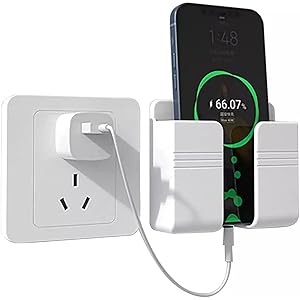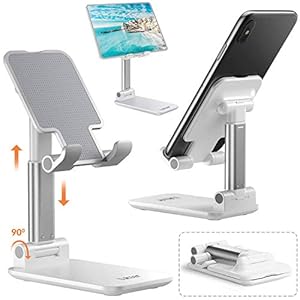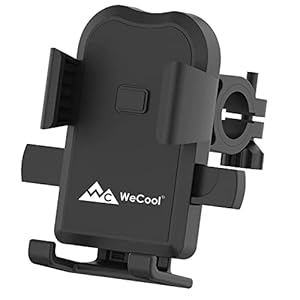
Virtually a yr in the past, I used to be prompted to search for one other budgeting app. Intuit, father or mother firm of Mint, the budgeting app I had been utilizing for a very long time, shut down the service in March 2024. The corporate inspired Mint customers emigrate to its different monetary app, Credit Karma, however I discovered it to be a poor Mint substitute after making an attempt it out. That despatched me looking elsewhere to search out an app to trace all of my monetary accounts, monitor my credit score rating, observe spending and set targets like constructing a rainy-day fund and paying down my mortgage sooner.
When you’re in search of a brand new budgeting app to get your funds straight, permit Engadget to assist. I attempted out Mint’s prime opponents within the hopes that I might have the ability to discover a new budgeting app that might deal with all of my monetary wants, and to see which are literally definitely worth the cash.
How we examined budgeting apps
Earlier than I dove in and began testing out budgeting apps, I had to perform a little research. To discover a listing of apps to check out, I consulted trusty ol’ Google (and even trustier Reddit); learn evaluations of in style apps on the App Retailer; and likewise requested buddies and colleagues what price range monitoring apps (or different budgeting strategies) they may be utilizing for cash administration. Among the apps I discovered had been free and these, in fact, present a great deal of advertisements (excuse me, “provides”) to remain in enterprise. However many of the obtainable apps require paid subscriptions, with costs sometimes topping out round $100 a yr, or $15 a month. (Spoiler: My prime decide is cheaper than that.)
All the companies I selected to check wanted to do a number of issues: import all your account knowledge into one place; supply budgeting instruments; and observe your spending, web value and credit score rating. Besides the place famous, all of those apps can be found for iOS, Android and on the internet.
As soon as I had my shortlist of six apps, I started working setting them up. For the sake of completely testing these apps, I made some extent of including each account to each budgeting app, regardless of how small or immaterial the stability. What ensued was a veritable Groundhog Day of two-factor authentication. Simply hours of coming into passwords and one-time passcodes, for a similar banks half a dozen instances over. Hopefully, you solely have to do that as soon as.
Greatest budgeting apps of 2025
No pun meant, however what I like about Quicken Simplifi is its simplicity. Whereas different budgeting apps attempt to distinguish themselves with darkish themes and customizable emoji, Simplifi has a clear consumer interface, with a touchdown web page that you just simply hold scrolling by way of to get an in depth overview of all of your stats. These embody your top-line balances; web value; latest spending; upcoming recurring funds; a snapshot of your spending plan; prime spending classes; achievements; and any watchlists you’ve arrange. You too can arrange financial savings targets elsewhere within the app. I additionally respect the way it provides neat, nearly playful visualizations with out ever trying cluttered. I felt at house within the cellular and internet dashboards after a day or so, which is quicker than I tailored to some competing companies (I’m taking a look at you, YNAB and Monarch).
Getting arrange with Simplifi was principally painless. I used to be notably impressed at how simply it linked to Constancy; not all price range trackers do, for no matter motive. That is additionally one of many solely companies I examined that provides you the choice of inviting a partner or monetary advisor to co-manage your account. One factor I’d add to my preliminary evaluation of the app, having used it for a couple of months now: I want Simplifi provided Zillow integration for simply monitoring your property worth (or no less than a tough estimate of it). Varied opponents together with Monarch Cash and Copilot Cash work with Zillow, so clearly there is a Zillow API obtainable to be used. Because it stands, Simplifi customers should add actual property manually like some other asset.
In observe, Simplifi miscategorized a few of my bills, however nothing out of the strange in comparison with any of those price range trackers. As you’re reviewing transactions, you can too mark in the event you’re anticipating a refund, which is a singular function among the many companies I examined. Simplifi additionally estimated my common revenue higher than another apps I examined. Most of all, I appreciated the choice of having the ability to categorize some, however not all, purchases from a service provider as recurring. For example, I can add my two Amazon subscribe-and-saves as recurring funds, with out having to create a broad-strokes rule for each Amazon buy.
The budgeting function can be self-explanatory. Simply test that your common revenue is correct and you should definitely arrange recurring funds, making notice of that are payments and that are subscriptions. That is essential as a result of Simplifi exhibits you your whole take-home revenue in addition to an “revenue after payments” determine. That quantity consists of, effectively, payments however not discretionary subscriptions. From there, you’ll be able to add spending targets by class within the “deliberate spending” bucket. Deliberate spending may embody one-time expenditures, not simply month-to-month budgets. If you create a price range, Simplifi will counsel a quantity based mostly on a six-month common.
Not dealbreakers, however two issues to bear in mind as you get began: Simplifi is notable in you can’t arrange an account by way of Apple or Google. There’s additionally no choice for a free trial, although Quicken guarantees a “30-day a reimbursement assure.”
- Straightforward-to-use app with a delicate studying curve
- Does a superb job detecting recurring revenue and payments
- Cheaper than the competitors
- Enables you to share app entry with a partner or monetary advisor
- Useful refund tracker
- No free trial
- You may’t create an account utilizing your Apple or Google ID
- No Zillow integration
Monarch Money grew on me. My first impression of the budgeting app, which was based by a former Mint product supervisor, was that it is tougher to make use of than others on this listing, together with Simplifi, NerdWallet and Copilot. And it’s. Modifying expense classes, including recurring transactions and creating guidelines, for instance, is a bit more sophisticated than it must be, particularly within the cellular app. (My recommendation: Use the online app for fine-tuning particulars.) Monarch additionally didn’t get my revenue proper; I needed to edit it.
When you’re arrange, although, Monarch provides a powerful stage of granularity. Within the budgets part, you’ll be able to see a bona fide stability sheet displaying budgets and actuals for every class. You may additionally discover a forecast, for the yr or by month. And recurring bills could be set not simply by service provider, however different parameters as effectively. For example, whereas most Amazon purchases may be marked as “purchasing,” these for the quantities of $54.18 or $34.18 are positively child provides, and could be robotically marked as such every time, to not point out programmed as recurring funds. Weirdly, although, there’s no option to mark sure recurring funds as payments, particularly.
Not lengthy after I first revealed this story in December 2023, Monarch introduced an in depth reporting part the place you’ll be able to create on-demand graphs based mostly on issues like accounts, classes and tags. That function is accessible simply on the internet model of the app for now. As a part of this similar replace, Monarch added assist for an aggregator that makes it doable to robotically replace the worth of your automotive. This, mixed with the prevailing Zillow integration for monitoring your property worth, makes it simple to rapidly add a non-liquid asset like a car or actual property, and have it present up in your web value graph.
The cellular app is usually self-explanatory. The principle dashboard exhibits your web value; your 4 most up-to-date transactions; a month-over-month spending comparability; revenue month-to-date; upcoming payments; an investments snapshot; a listing of any targets you’ve set; and, lastly, a hyperlink to your month-in-review. That month-in-review is extra detailed than most, delving into money movement; prime revenue and expense classes; money movement developments; modifications to your web value, property and liabilities; plus asset and legal responsibility breakdowns. In February 2024, Monarch expanded on the net worth graph, in order that in the event you click on on the Accounts tab you’ll be able to see how your web value modified over completely different durations of time, together with one month, three months, six months, a yr or all time.
On the primary display screen, you’ll additionally discover tabs for accounts, transactions, money movement, price range and recurring. Like most of the different apps featured right here, Monarch can auto-detect recurring bills and revenue, even when it will get the class mistaken. (All of them do to an extent.) Expense classes are marked by emoji, which you’ll be able to customise in the event you’re so inclined.
Monarch Cash makes use of a mixture of networks to attach with banks, together with Plaid, MX and Finicity, a competing community owned by Mastercard. (I’ve a fast explainer on Plaid, the trade customary on this area, towards the top of this information.) As a part of an replace in late December, Monarch has additionally made it simpler to attach by way of these different two networks, if for some motive Plaid fails. Much like NerdWallet, I discovered myself finishing two-factor authentication each time I wished to get previous the Plaid display screen so as to add one other account. Notably, Monarch is the one different app I examined that means that you can grant entry to another person in your loved ones — probably a partner or monetary advisor.
Moreover, Monarch simply added the power to trace Apple Card, Apple Money, and Financial savings accounts, due to new performance introduced with the iOS 17.4 replace. It isn’t the one one both; presently, Copilot and YNAB have additionally added comparable performance that will probably be obtainable to anybody with the most recent variations of their respective apps on a tool working iOS 17.4. As an alternative of manually importing statements, the brand new performance permits apps like Monarch’s to robotically pull in transactions and stability historical past. That ought to make it simpler to account for spending on Apple playing cards and accounts all through the month.
Monarch additionally lately launched funding transactions in beta. It additionally says invoice monitoring and an overhauled targets system are coming quickly. Monarch hasn’t offered a timeline for that final one, besides to say that the improved targets function is coming quickly.
- A number of element and alternatives for personalization
- Useful “targets” function
- You may grant account entry to different individuals
- Chrome extension for importing from Mint
- Month-in-review recap is extra thorough than most
- Automotive worth syncing
- Zillow integration
- Steeper studying curve than another price range trackers
- The cellular app feels restricted and fewer intuitive than the online model
- Doesn’t appear to tell apart between payments and different recurring bills
- Some bugginess on cellular round creating guidelines for expense classes
You could know NerdWallet as a website that provides a mixture of private finance information, explainers and guides. I see it typically after I google a monetary time period I don’t know and positive sufficient, it’s one of many websites I’m most probably to click on on. Because it occurs, NerdWallet additionally has the excellence of providing one of many solely free budgeting apps I examined. In reality, there is no such thing as a paid model; nothing is locked behind a paywall. The principle catch: There are advertisements all over the place.
Even with the inescapable bank card provides, NerdWallet has a clear, easy-to-understand consumer interface, which incorporates each an internet and a cellular app. The important thing metrics that it highlights most prominently are your money movement, web value and credit score rating. I notably loved the weekly insights, which delve into issues like the place you spent probably the most cash or how a lot you paid in charges — and the way that compares to the earlier month. As a result of that is NerdWallet, an encyclopedia of monetary information, you get some notably particular class choices when organising your accounts (assume: a Roth or non-Roth IRA).
As a budgeting app, NerdWallet is greater than serviceable, if a bit primary. Like different apps I examined, you’ll be able to arrange recurring payments. Importantly, it follows the favored 50/30/20 budgeting rule, which has you placing 50% of your price range towards belongings you want, 30% towards belongings you need, and the remaining 20% into financial savings or debt repayments. If this works for you, nice — simply know you can’t customise your price range to the identical diploma as some competing apps. You may’t presently create customized spending classes, although a notice contained in the dashboard part of the app says “you’ll have the ability to customise them sooner or later.” You can also’t transfer objects from the desires column to “wants” or vice versa however “Sooner or later, you can transfer particular transactions to actively handle what falls into every group.” A NerdWallet spokesperson declined to offer an ETA, although.
Lastly, it’s value noting that NerdWallet had probably the most onerous setup processes of any app I examined. I don’t assume it is a dealbreaker, as you’ll solely need to do it as soon as and, hopefully, you aren’t organising six or seven apps in tandem as I used to be. What made NerdWallet’s onboarding particularly tedious is that each time I wished so as to add an account, I needed to undergo a two-factor authentication course of to even get previous the Plaid splash display screen, and that’s not together with the 2FA I had arrange at every of my banks. It is a safety coverage on NerdWallet’s finish, not Plaid’s, a Plaid spokesperson says.
Exactly as a result of NerdWallet is likely one of the solely price range trackers to supply credit score rating monitoring, it additionally wants extra of your private information throughout setup, together with your birthday, handle, telephone quantity and the final 4 digits of your social safety quantity. It’s the identical with Credit score Karma, which additionally does credit score rating monitoring.
Associated to the setup course of, I discovered that NerdWallet was much less adept than different apps at robotically detecting my common revenue. In my case, it counted a big one-time wire switch as revenue, at which level my solely different choice was to enter my revenue manually (which is barely annoying as a result of I’d have wanted my pay stub helpful to double-check my take-home pay).
- Free
- Straightforward to make use of
- Useful weekly insights
- NerdWallet has a deep effectively of useful monetary explainers and guides
- One of many few choices that provides credit score rating monitoring
- Adverts all over the place
- No customization for spending classes
- Much less adept at detecting common revenue
- One of many extra tedious setup processes
Copilot Money may be the best-looking budgeting app I examined. It additionally has the excellence of being unique to iOS and Macs — no less than for now. Andres Ugarte, the corporate’s CEO, has publicly promised that Android and internet apps are coming quickly. However till it follows by way of, I can’t suggest Copilot for most individuals with so many good opponents on the market.
There are different options that Copilot is lacking, which I’ll get into. However it’s promising, and one to control. It’s only a quick, environment friendly, effectively designed app, and Android customers will probably be in for a deal with after they’ll lastly have the ability to obtain it. It makes good use of colours, emoji and graphs that can assist you perceive at a look the way you’re doing on every part out of your budgets to your funding efficiency to your bank card debt over time. Specifically, Copilot does a greater job than nearly some other app of visualizing your recurring month-to-month bills.
Behind these punchy colours and cutesy emoji, although, is a few refined efficiency. Copilot’s AI-powered “Intelligence” will get smarter as you go at categorizing your bills. (You too can add your personal classes, full together with your selection of emoji.) It’s not excellent. Copilot miscategorized some purchases (all of them do), however it makes it simpler to edit than most. On prime of that, the interior search function may be very quick; it begins whittling down ends in your transaction historical past as quickly as you start typing.
Copilot can be distinctive in providing Amazon and Venmo integrations, permitting you to see transaction particulars. With Amazon, this requires simply signing into your Amazon account by way of an in-app browser. For Venmo, you need to arrange fwd@copilot.cash as a forwarding handle after which create a filter, whereby emails from venmo@venmo.com are robotically forwarded to fwd@copilot.cash. Like Monarch Cash, you can too add any property you personal and observe its worth by way of Zillow, which is built-in with the app.
Whereas the app is closely automated, I nonetheless respect that Copilot marks new transactions for overview. It’s a great way to each weed out fraudulent prices, and likewise be considerably intentional about your spending habits.
Like Monarch Cash, Copilot up to date its app to make it simpler to connect with banks by way of networks aside from Plaid. As a part of the identical replace, Copilot mentioned it has improved its connections to each American Specific and Constancy which, once more, is usually a bugbear for some price range monitoring apps. In an much more latest replace, Copilot added a Mint import choice, which different budgeting apps have begun to supply as effectively.
As a result of the app is comparatively new (it launched in early 2020), the corporate remains to be catching as much as the competitors on some table-stakes options. Ugarte instructed me that his group is sort of achieved constructing out an in depth money movement part as effectively. On its website, Copilot additionally guarantees a raft of AI-powered options that construct on its present “Intelligence” platform, the one which powers its good expense categorization. These embody “good monetary targets,” pure language search, a chat interface, forecasting and benchmarking. That benchmarking, Ugarte tells me, is supposed to present individuals a way of how they’re doing in comparison with different Copilot customers, on each spending and funding efficiency. Most of those options ought to arrive within the new yr.
Copilot does a pair attention-grabbing issues for brand spanking new clients that distinguish it from the competitors. There’s a “demo mode” that seems like a recreation simulator; no want so as to add your personal accounts. The corporate can be providing two free months with RIPMINT — a extra beneficiant introductory supply than most. When it lastly does come time to pony up, the $7.92 month-to-month plan is cheaper than some competing apps, though the $95-a-year-option is in the identical ballpark.
- Slick UI
- Standalone Mac app
- Decrease month-to-month value than some competing apps
- Does a superb job visualizing recurring bills
- Non-compulsory Amazon, Venmo and Zillow integration
- “To overview” part is helpful
- No internet or Android app but
- Miscategorized extra bills than our prime decide
- A number of in any other case frequent options are nonetheless in growth
YNAB is, by its own admission, “completely different from something you’ve tried earlier than.” The app, whose title is brief for You Want a Price range, is a so-called zero-based budgeting app, which forces you to assign a goal for each greenback you earn. It is akin to the envelope budgeting technique in that you just put every greenback in an envelope and you’ll all the time transfer cash from one envelope to a different in a pinch. These buckets can embody hire and utilities, together with unexpected bills like vacation items and the inevitable automotive restore. The concept is that in the event you price range a specific amount for the unknowns every month, they received’t really feel like they’re sneaking up on you.
Importantly, YNAB is simply involved with the cash you may have in your accounts now. The app doesn’t ask you to offer your take-home revenue or arrange recurring revenue funds (though there’s a means to do that). The cash you’ll make later within the month by way of your salaried job is just not related, as a result of YNAB doesn’t have interaction in forecasting.
The app is tougher to be taught than some other right here, and it requires extra ongoing effort from the consumer. And YNAB is aware of that. Inside each the cellular and internet apps are hyperlinks to movies and different tutorials. Though I by no means fairly acquired snug with the consumer interface, I did come to understand YNAB’s insistence on intentionality. Forcing customers to draft a brand new price range every month and to overview every transaction is just not essentially a nasty factor. As YNAB says on its web site, “Positive, you’ve acquired pie charts displaying that you just spent an obscene sum of money in eating places — however you’ve nonetheless spent an obscene sum of money in eating places.” I can see this strategy being helpful for individuals who don’t are likely to have loads of money in reserve at a given time, or who’ve spending habits they wish to right (to riff off of YNAB’s personal instance, ordering Seamless 4 instances every week).
My colleague Valentina Palladino, understanding I used to be engaged on this information, penned a respectful rebuttal, explaining why she’s been utilizing YNAB for years. Maybe, like her, you may have main financial savings targets you wish to obtain, whether or not it’s paying for a marriage or shopping for a home. I counsel you give her column a learn. For me, although, YNAB’s strategy seems like overkill.
- Significantly robust emphasis on budgeting
- Distinctive “zero-dollar” strategy to monetary planning that some individuals swear by
- Steep studying curve
- Tougher to make use of sure options on the cellular app than on the internet
PocketGuard is likely one of the solely respected free price range trackers I discovered in my analysis. Simply realize it’s much more restricted on the free tier than NerdWallet. In my testing, I used to be prompted to pay after I tried to hyperlink greater than two financial institution accounts. A lot free of charge, except you retain issues easy with one money account and one bank card. When it comes time to improve to PocketGuard Plus, you may have three choices: pay $7.99 a month, $34.99 a yr or $79.99 for a one-time lifetime license. That lifetime choice is definitely one of many few distinctive promoting factors for me: I’m positive some individuals will respect paying as soon as and by no means having to, uh, price range for it once more.
From the primary display screen, you’ll see tabs for accounts, insights, transactions and the “Plan,” which is the place you see recurring funds stacked on prime of what seems like a price range. The principle overview display screen exhibits you your web value, whole property and money owed; web revenue and whole spending for the month; upcoming payments; a helpful reminder of when your subsequent paycheck lands; any debt payoff plan you may have; and any targets.
Like another apps, together with Quicken Simplifi, PocketGuard promotes an “after payments” strategy, the place you enter all your recurring payments, after which PocketGuard exhibits you what’s left, and that’s what you’re alleged to be budgeting: your disposable revenue. Clearly, different apps have a distinct philosophy: consider all your post-tax revenue and use it to pay the payments, buy belongings you need and possibly even save a bit. However in PocketGuard, it’s the “in your pocket” quantity that’s most distinguished. To PocketGuard’s credit score, it does a superb job visualizing which payments are upcoming and which of them you’ve already paid.
In early 2024, PocketGuard additionally publicly committed to including some in style options. These embody rollover budgeting, categorization guidelines and shared family entry.
Though PocketGuard’s UI is simple sufficient to grasp, it lacks polish. The “accounts” tab is a bit busy, and doesn’t present totals for classes like money or investments. Seemingly small particulars like weirdly phrased or punctuated copy sometimes make the app really feel janky. Greater than as soon as, it prompted me to replace the app when no updates had been obtainable. The net model, in the meantime, feels just like the cellular app blown as much as a bigger format and doesn’t benefit from the additional display screen actual property.
Of notice, though PocketGuard does work with Plaid, its main bank-connecting platform is definitely Finicity. Organising my accounts by way of Finicity was principally a simple course of. I did encounter one hiccup: Finicity wouldn’t hook up with my SoFi account. I used to be in a position to do it by way of Plaid, however PocketGuard doesn’t make it simple to entry Plaid within the app. The one means, so far as I can inform, is to knowingly seek for the title of a financial institution that isn’t obtainable by way of Finicity, at which level you get the choice to attempt Plaid as an alternative. Like I mentioned: the expertise could be janky.
- One of many solely price range trackers with a free plan
- You may keep away from an ongoing subscription price by choosing a one-time lifetime license
- Cheaper than most opponents
- Useful “upcoming payments” view within the app
- The free model is so restricted that the “free” label feels deceptive; the consumer expertise feels much less polished than some competing apps
- The net app doesn’t benefit from the bigger display screen area on desktop
Budgeting app FAQs
What’s Plaid and the way does it work?
Every of the apps I examined makes use of the identical underlying community, known as Plaid, to tug in monetary knowledge, so it’s value explaining what it’s and the way it works. Plaid was based as a fintech startup in 2013 and is right now the trade customary in connecting banks with third-party apps. Plaid works with over 12,000 monetary establishments throughout the US, Canada and Europe. Moreover, greater than 8,000 third-party apps and companies depend on Plaid, the company claims.
To be clear, you don’t want a devoted Plaid app to make use of it; the expertise is baked into a big selection of apps, together with all the budgeting apps listed on this information. As soon as you discover the “add an account” choice in whichever one you’re utilizing, you’ll see a menu of generally used banks. There’s additionally a search subject you should use to look yours up straight. As soon as you discover yours, you’ll be prompted to enter your login credentials. When you have two-factor authentication arrange, you’ll have to enter a one-time passcode as effectively.
Because the intermediary, Plaid is a passthrough for info that will embody your account balances, transaction historical past, account kind and routing or account quantity. Plaid makes use of encryption, and says it has a coverage of not promoting or renting buyer knowledge to different corporations. Nonetheless, I’d not be doing my job if I didn’t notice that in 2022 Plaid was forced to pay $58 million to consumers in a class action suit for amassing “extra monetary knowledge than was wanted.” As a part of the settlement, Plaid was compelled to vary a few of its enterprise practices.
In a press release offered to Engadget, a Plaid spokesperson mentioned the corporate continues to disclaim the allegations underpinning the lawsuit and that “the crux of the non-financial phrases within the settlement are targeted on us accelerating workstreams already underway associated to giving individuals extra transparency into Plaid’s function in connecting their accounts, and making certain that our workstreams round knowledge minimization stay on observe.”
Why did Mint shut down?
When father or mother firm Intuit announced in December 2023 that it could shut down Mint, it didn’t present a motive why it made the choice to take action. It did say that Mint’s hundreds of thousands of customers could be funneled over to its different finance app, Credit score Karma. “Credit score Karma is thrilled to ask all Minters to proceed their monetary journey on Credit score Karma, the place they’ll have entry to Credit score Karma’s suite of options, merchandise, instruments and companies, together with a few of Mint’s hottest options,” Mint wrote on its product blog. In our testing, we discovered that Credit score Karma is not an actual substitute for Mint — so in the event you’re nonetheless in search of a Mint alternative, you may have some respectable choices.
What about Rocket Cash?
Rocket Money is one other free monetary app that tracks spending and helps issues like stability alerts and account linking. When you pay for the premium tier, the service may enable you to cancel undesirable subscriptions. We didn’t take a look at it for this information, however we’ll contemplate it in future updates.
Trending Merchandise




![CRATIX 360°Rotatable and Retractable Car Phone Holder, Rearview Mirror Phone Holder [Upgraded] Universal Phone Mount for Car Adjustable Rear View Mirror Car Mount for All Smartphones](https://m.media-amazon.com/images/I/410N7NZtIjL._SS300_.jpg)





![Car Phone Holder Mount, [Military-Grade Suction & Super Sturdy Base] Universal Phone Mount for Car Dashboard Windshield Air Vent Hands Free Car Phone Mount for iPhone Android All Smartphones](https://m.media-amazon.com/images/I/51KK2oa9LDL._SS300_.jpg)
